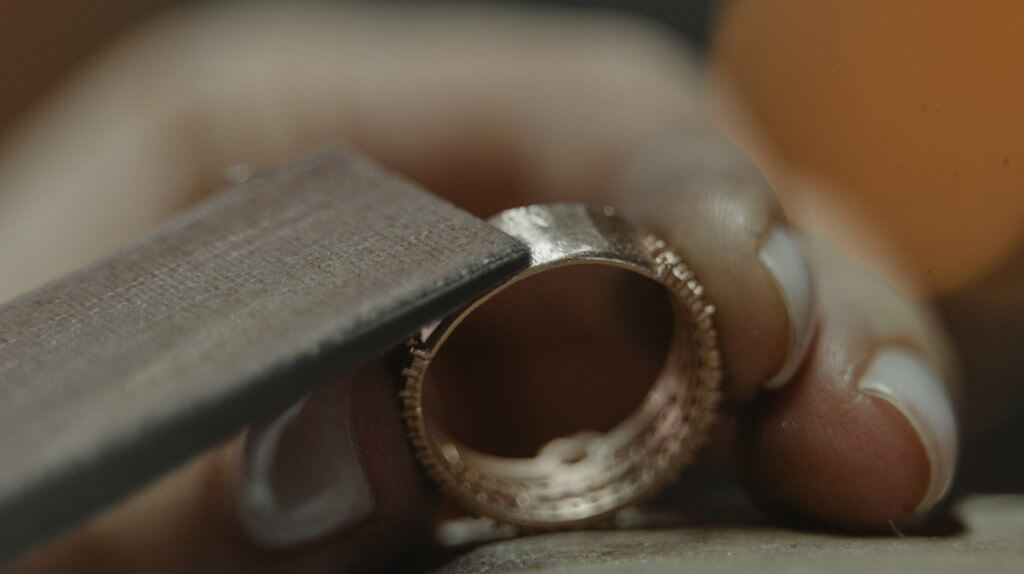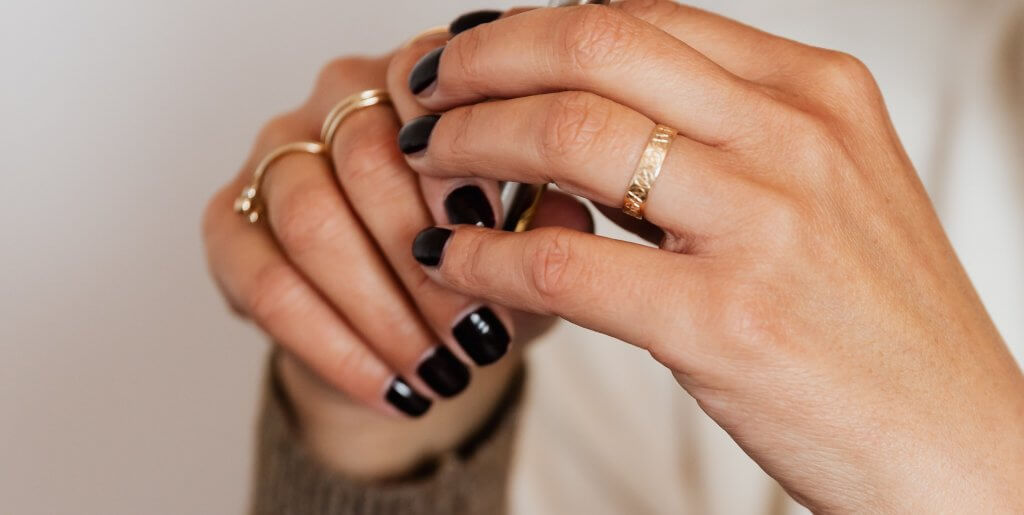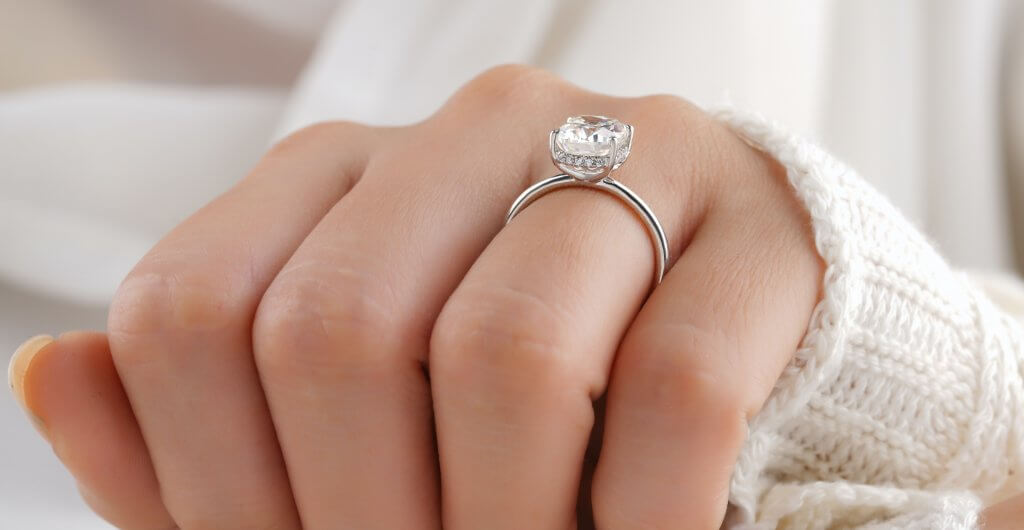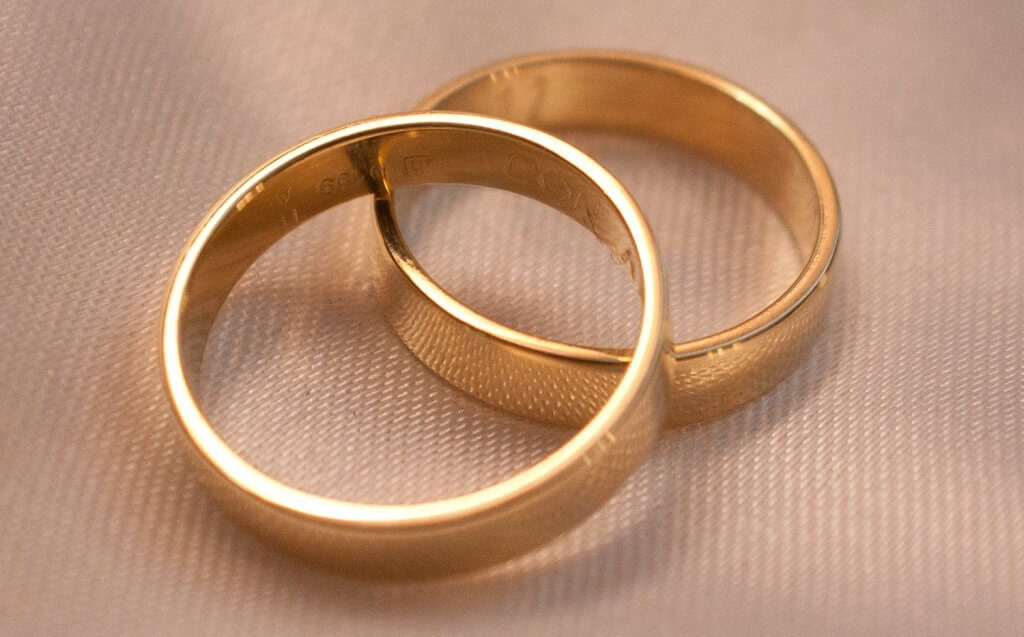10K vs 14K Gold: Understanding the Differences
Key Takeaways
- While 14K is a far more popular choice for bridal jewelry than 10K, plenty of people appreciate the softer, subtler tones of this lower karat type – and, for obvious reasons, the added strength it offers.
- Then again, 14K gold is definitely strong enough to be worn on a daily basis, for many years.
- 14K gold features more gold than alloying metals, while 10K gold features more alloy than gold. This often sways shoppers in favor of 14K gold, since that is the truly special and significant metal – not the alloys.
- There’s no right or wrong answer. If you’re on the fence, take a look at both options in person, and figure out which one looks better to you.

For anyone investing in gold for their engagement ring or wedding bands. weighing up the options is a little more complicated than it is for those who have elected to use platinum, or even palladium.
Why? Because you cannot purchase a piece of solid gold jewelry without considering its karat type – a particular measure of purity used to convey how much gold is present within the piece in question.
One of the most common karat types for engagement rings and wedding bands is 14, but many shoppers are interested to know about the benefits of saving a little extra money on 10K gold instead.
As always, there are advantages and disadvantages to both options – although settling on the karat type that’s right for you might not be as difficult as it sounds right now…
What is the Key Difference Between 10K and 14K Gold?
Purity. 14K gold features a much higher level of purity than 10K gold.
Gold jewelry is almost never pure gold. This has nothing to do with cost or rarity, however, and everything to do with durability.
A piece of pure gold jewelry, while beautiful in color and shine, will prove unwearable on a daily basis – or even a semi-regular basis. It’s soft, prone to scratching, bending, denting, and warping, and easily ruined after just a couple of wears. Given the incredibly high value of pure gold, it’s understandable why it’s such a rare sight in the jewelry world.
This is why gold is alloyed (or combined with other, stronger metals) before making its way to the jeweler’s worktable. Your existing gold jewelry will have a purity level below 100% — or, more accurately, 24 karats.
Why? Because jewelry is represented in 24 parts, meaning that pure gold would represent 24/24 of those parts.
14 karats can be represented in the fraction 14/24 (14 parts gold out of a total 24 parts, with 10 parts alloy making up the difference).
Similarly, 10 karats can be represented in the fraction 10/24, with 10 parts of gold to 14 parts alloy. Interestingly, until 2018, 10 karats represented the lowest karat type that was permitted to be called ‘gold’ within the US.
This is the key difference between the two – that 14 karat gold rings feature more gold than 10 karat gold rings of the same size – but that fact alone doesn’t help you pick out jewelry. More importantly, it has ramifications for the look, strength, and cost of your chosen jewelry.
Here’s what you need to know…
Appearance
The first thing on anyone’s mind – even before their eyes wander over to the price tag – is what their ideal ring will look like. Karat type has a pretty significant impact on appearance, and shoppers will know pretty quickly which one they prefer.
Can You Tell the Difference Between 10K and 14K Gold?
Yes, the difference is clearly noticeable – particularly when the two metals are compared directly side-by-side.
Are you going to be able to instantly identify the karat type of your cashier’s wedding band, on sight, after reading this article? Probably not – unless, of course, it turns out to be a lucky guess. But, when you go to your local jewelry store for your consultation and they lay out a 10 karat and 14 karat band on the case in front of you, we’re pretty confident you’d be able to identify them without much difficulty.
Is There a Difference in Color Between 10K and 14K Gold?
Yes. 14K features a more vivid, brighter yellow hue, while 10K gold is paler – a calmer shade of yellow that is lacking the richness and depth of the higher karat types.
Why? Because the additional alloy in the 10K gold ‘dilutes’ the original color even more. While 14K gold is less vivid than 18K gold, it looks very bright in comparison to 10K gold.
One of the main reasons why 14K gold is so popular is because of the fact that it’s still more gold than alloy. At just over 58% purity, 14 karat gold retains much, much more of the warmth and vividity of pure gold than 10 karat gold, which stands at just under 42% purity.
It may sound like we’re tipping the scales in favor of 14K gold, but the truth is that there is no right or wrong answer to the question, ‘Which is more beautiful?’
True, the majority of shoppers are likely to favor the look of 14K gold, simply because of the fact that it looks ‘more golden’ than its 10K equivalent. Nevertheless, some will prefer the more muted tones of 10K gold.
Is 10k White Gold Better than 14K?
For some shoppers, yes, since the lower karat type does not mean a loss of warmth as it does for 10K yellow gold.
When it comes to white gold, the story is a little different. White gold is typically chosen for its resemblance to platinum, rather than any remaining undertone of yellow. This means that, for some shoppers, 10K white gold makes the most financial sense – particularly when you take durability into account (more on that below).
Still, plenty of white gold shoppers will opt for the popular 14K instead – primarily because of the prestige of owning a ring that contains more gold.
Gold has a lot of cultural significance around the world, and particularly for couples making the ultimate, lifelong commitment to one another. Many shoppers don’t want to sacrifice those additional ‘parts’ of gold for the sake of saving a little money, and prefer to invest in a ring that features more gold than alloy.

Cost
The other half of the story. Gold is infamously expensive and, while the amounts used within engagement ring settings are generally pretty small, there is a pretty substantial price difference between each karat type.
What’s Worth More, 14K or 10K Gold?
14K is significantly more valuable than 10K since it contains more gold.
While all metals – including the common alloys found in gold jewelry – have their own value, the gold is the star of the show when it comes to value, and you can expect to pay significantly more to step over the threshold separating 10K from 14K.
In a 7g solid gold wedding band, for instance, the price difference between the gold required to make a 10K ring and a 14K ring could be around 35%. This is, of course, for the gold alone – and not the jeweler’s time required to design and create the ring.
It might sound like a dramatic increase given the proximity between 10K and 14K, but it’s one that most shoppers consider a necessity, since the two are separated by a key concern: the fact that one (14K) refers to rings featuring more gold than alloy, and the other (10K) refers to rings featuring more alloy than actual gold.
Durability
We’ve already mentioned how gold is alloyed for jewelry because of its low level of durability, and its tendency toward showing damage from wear and tear devastatingly quickly. Some people are willing to sacrifice more of gold’s original beauty than others in return for greater strength, and that’s why so many different levels of purity are available for shoppers.
Is 10K Gold Stronger than 14K?
Yes. As a result of the higher quantity of alloy, 10K features even more strength than 14K – although both are considered strong enough to be worn on an everyday basis.
Just as the color of gold is significantly diluted in 10K pieces, so too are its other properties. Gold’s pliability and lack of resilience to bending and breaking are as good as gone when you reach the level of 10K, making it by far the most robust and sturdy choice for jewelry that will be worn day in, day out, for the rest of your life.
There is a key consideration here, however: how much difference will you detect between a 10K gold ring and a 14K gold ring, in terms of durability alone?
In all likelihood, none at all. 10K, 14K and 18K are all considered to be sturdy enough to be used for engagement rings (including holding that diamond in place) and wedding bands. Sure, 18K is the softest of the three, but it’s not going to feel anything like pliable and flexible pure gold.
18K and 14K will both scratch more easily than 10K. but 14K is considered by most to represent the best ‘middle ground’ between strength and appearance.
Making gold as strong as possible means sacrificing its distinctive color; keeping gold as vivid as possible means sacrificing its ability to be worn more than a couple of times before it sustains noticeable damage. Making gold as strong as it needs to be without losing any more color than necessary yields 18K and 14K gold; two solid choices for anyone who prefers finding a sweet spot over making a major a compromise.
Our Summary: Is 10K or 14K Gold Better?
Each hold their own value for the jewelry world but, for the most part, we would consider 14 karat gold to be the better choice for anyone looking to create a beautiful gold engagement ring or wedding band.
Durability is essential, and we would never recommend that shoppers sacrifice strength for aesthetics – particularly when there’s a valuable diamond at stake. That’s why we’d never suggest shoppers focus their sights higher than 18K.
There is, however, a big difference between the high expense and lower durability of 18K gold, and what is widely regarded as inferior color of 10K gold – and that difference is accounted for excellently within 14K gold.
There’s a lot more to the 14K vs 18k gold debate than that, of course, but so far as we’re concerned 14K always comes out on top if you find yourself on the fence between 14 and 10 karats.
As we say with anything relating to diamonds, however, there’s a lot missing from your deliberations if you haven’t seen these gold types in person. Chances are you’ve never paid all that much attention to gold jewelry before now – or you wouldn’t still be reading this far – and, through a screen, pictures alone are not enough to convey the subtle-yet-tangible differences between 10K, 14K and 18K.
14K creates a stunning contrast between the warmth of the metal and the glassy clarity of a diamond – not to mention those flashes of brilliance and fire. For many people, it looks like the more expensive choice thanks to its richer, deeper hue and warm shine, and lives up to our expectations of what solid gold jewelry ought to look like.

Nov 14, 2021 By Willyou.net
14K Gold: A Look into its Popularity

Nov 14, 2021 By Willyou.net
White Gold: The Guide








